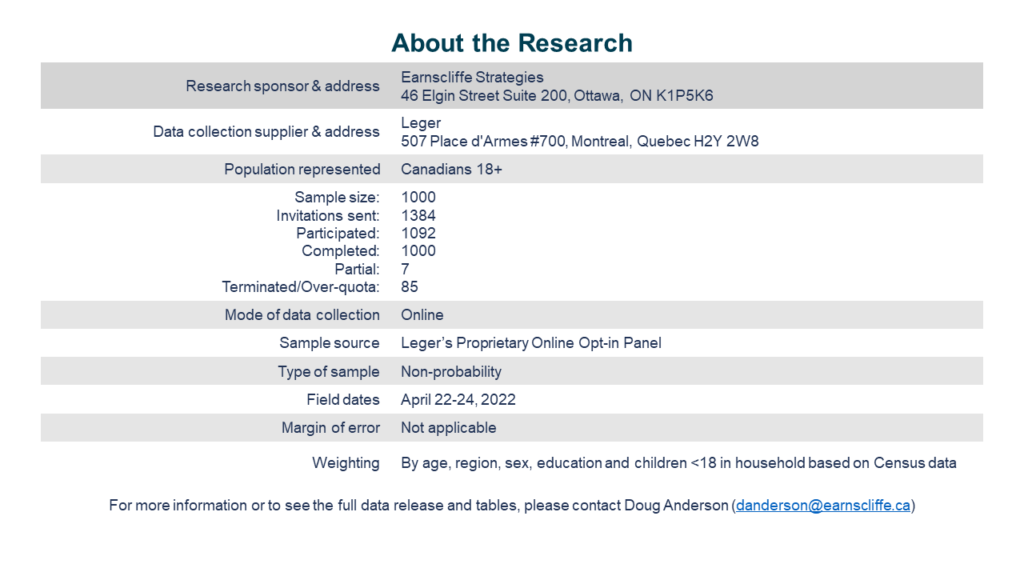Written by Doug Anderson, Allan Gregg and Hilary Martin
Approaching the budget and the starting line, the horse race has already begun.
In advance of the Ontario provincial budget, Earnscliffe has begun our weekly tracking of Ontario voter intentions. This week’s data is based on an online survey of 1,000 Ontarians of voting age conducted between April 22-24, 2022 and shows the Ontario Progressive Conservatives (PC) at 38% of decided and leaning vote, providing a ten percentage point lead over the Ontario Liberal Party (28%) and the NDP (25%).
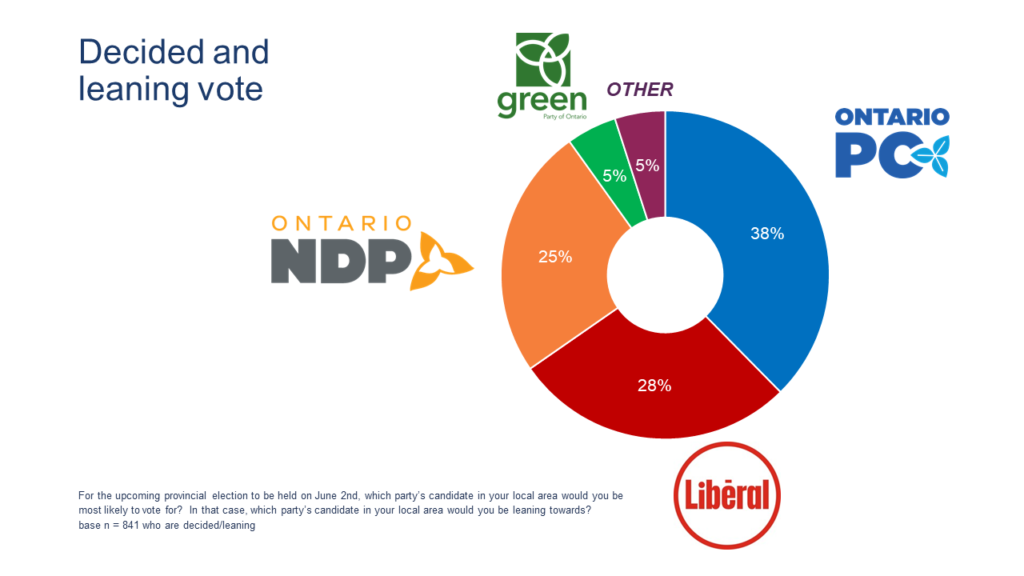
Compared to a similar study Earnscliffe conducted in February, the results show no difference that is statistically significant. However, compared to the last election, the Liberals enjoy much more voter support today, while NDP support is much lower and PC party support is almost as high as the 40% of the votes it secured in 2018 when it won a majority of seats. At 38%, the ten-point lead over divided opponents is comforting, but it means that PC voter support is in a range that does not always the result in a majority of seats, although it has in recent elections. In this range, even a small erosion in PC support or a small shift in support between the two opposing parties can significantly alter electoral prospects.
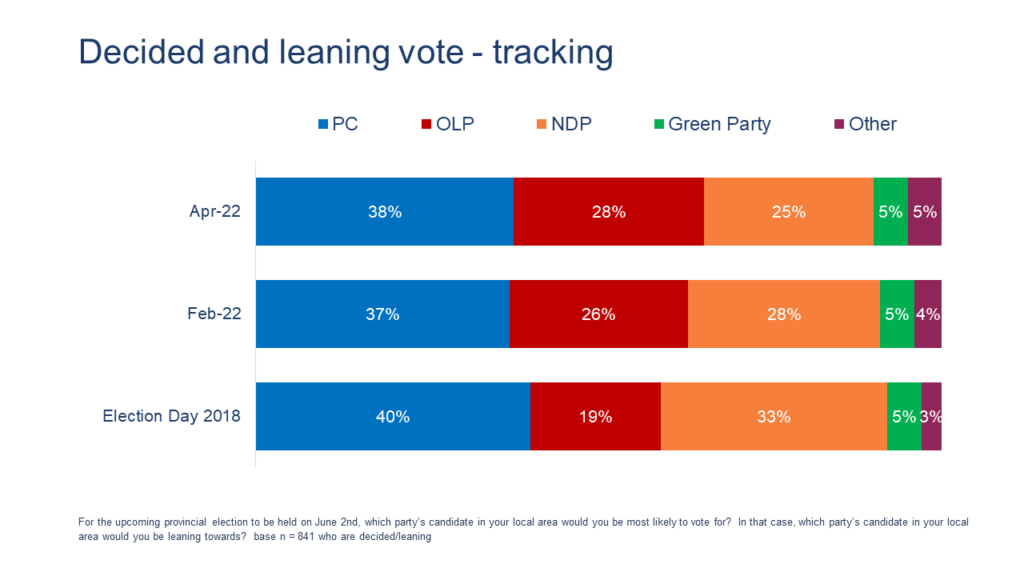
In our first-past-the-post system, the regional variance of voter support is essential for having a better understanding how seats might be distributed, and the results show the PC enjoys a lead in several seat-rich regions: the GTA (excluding Toronto itself); Southern Ontario; Hamilton/Niagara; and Eastern Ontario. In no region does either of the two main opposition parties lead in voter support, but the Liberals tie the PCs for the lead in Toronto and the NDP have support that is basically equal to the PCs in Northern Ontario.
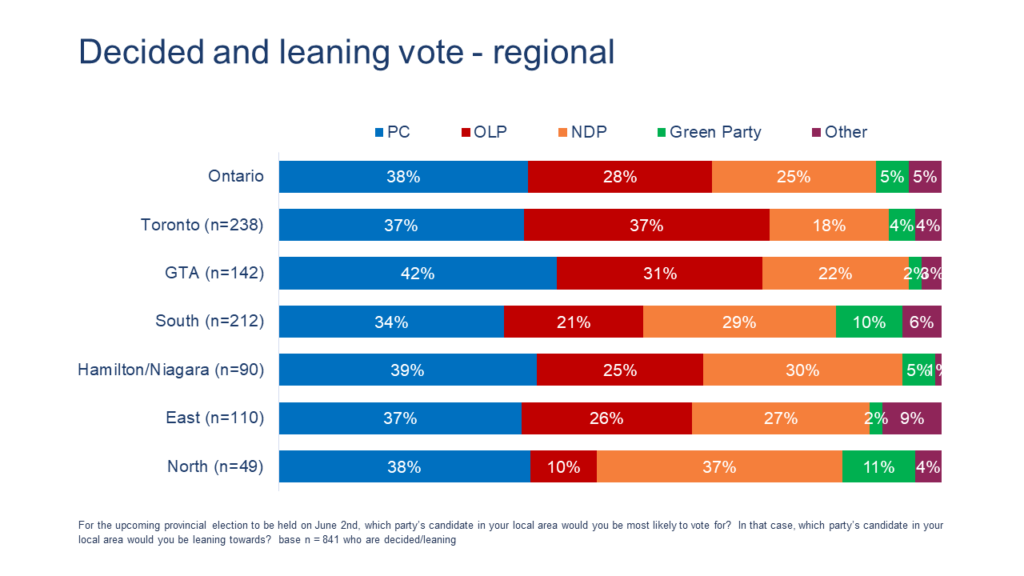
Demographically, there are a few other striking differences that will likely influence how the campaigns and electoral fortunes evolve:
- Community size: The PCs enjoy a significant lead in rural and suburban ridings, but in urban centres all three parties are virtually tied.
- Age: Although Liberal support does not vary much by age, for the other two parties, it is wildly different. The PC party has a massive lead among those 55 and older and a significant lead among those 35-54. The NDP has a significant lead among younger voters aged 18-34. With turnout often widely varying by age, this will be a key break to monitor over the course of the writ period.
- Sex: The PC leads among either sex, but the lead is larger among males. The NDP enjoys the support of 30% of females compared to 20% among males.
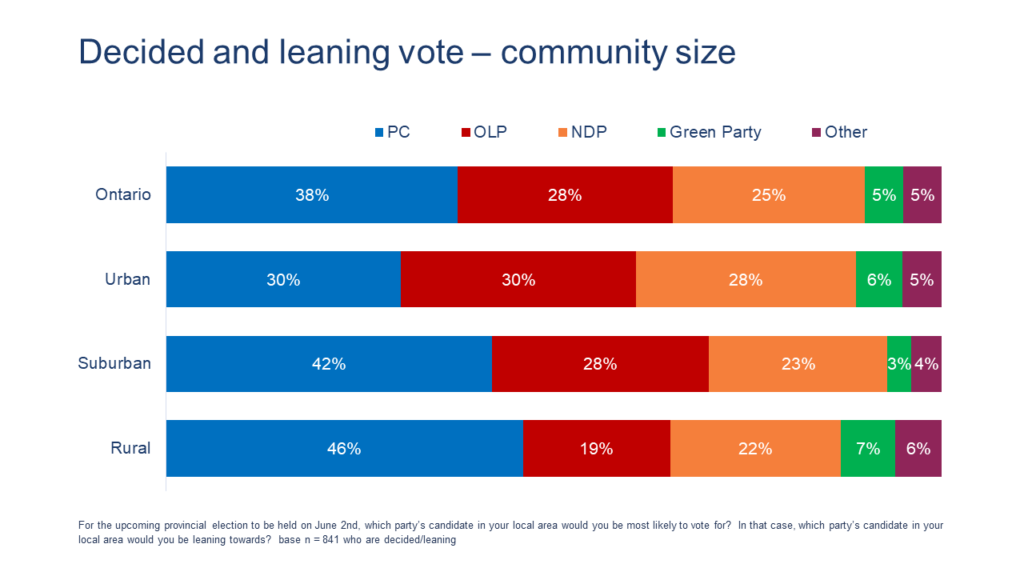
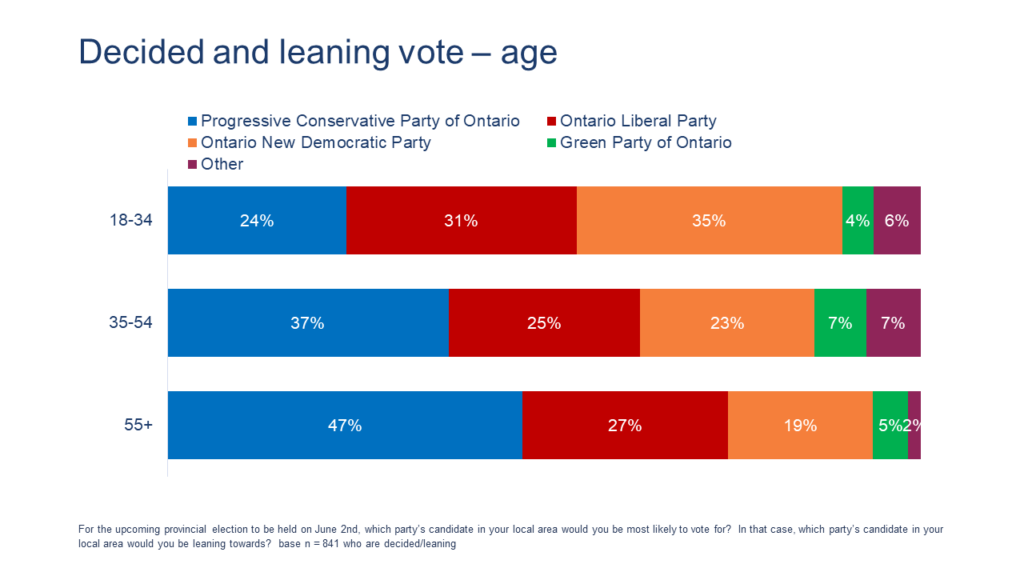
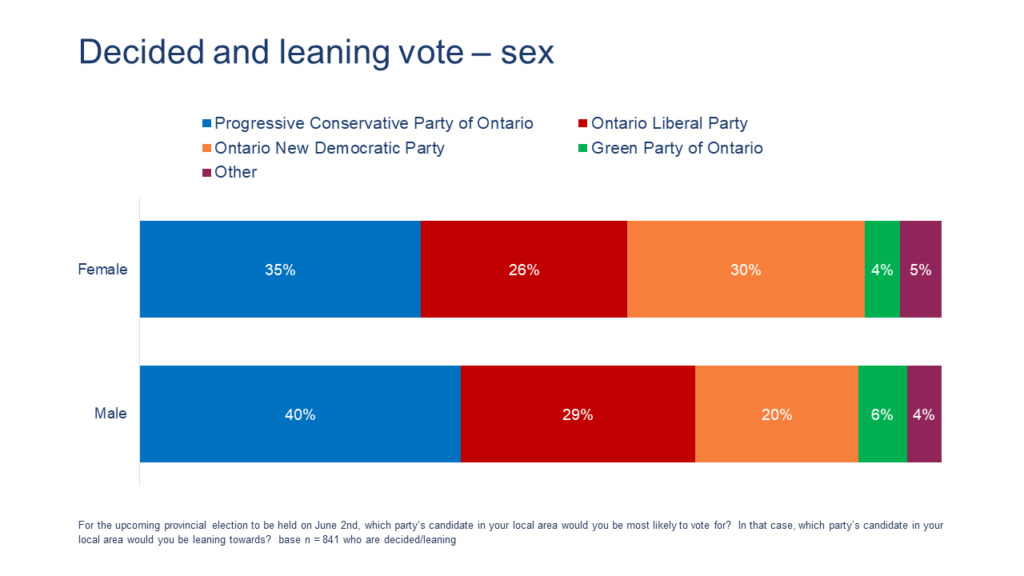
Methodology
This survey was sponsored, designed and analyzed by Earnscliffe Strategies and the field work was conducted by Leger. The survey was conducted with 1,000 individuals from Ontario between April 22-24, 2022. The data was weighted to be reflective of the Ontario population by age, region, sex, education and children under 18 in the household based on Census data. Since this survey was conducted using an online panel, no margin of error may be calculated.
Earnscliffe follows the CRIC Public Opinion Research Standards and Disclosure Requirements that can be found here: https://canadianresearchinsightscouncil.ca/standards/
View the survey questionnaire | Download the full data tables
